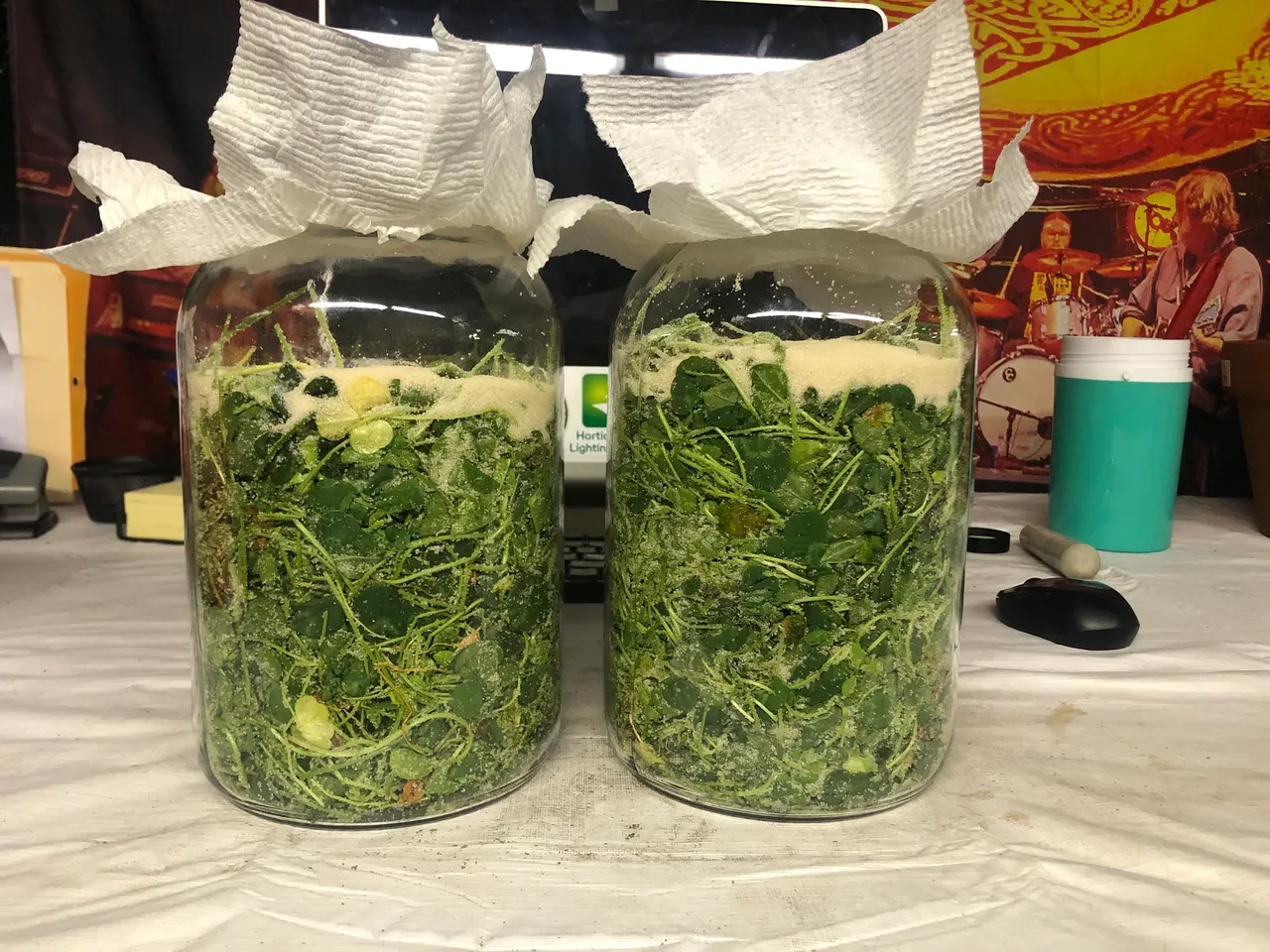FPJ and FFJ are natural fertilizers made from the fermentation of specific plant materials to feed growing plants during different stages of their life cycles. FPJs are made from young vigorous growing plants with lots of growth hormones and enzymes to feed vegging plants. While FFJs are made from the fruits of plants for their natural sugars, amino acids, and plant growth regulating enzymes and hormones to feed flowering plants. The process involves collecting fresh and healthy plant parts, such as leaves, stems, shoots and fruits, and fermenting them to extract the beneficial properties in to a water soluble plant available solution.
Collecting Plant Material
For FPJ gather fresh and healthy plants early in the morning when morning dew is still present. Look for things like weeds that grow big fast and are tolerant to a wide range of temperatures or weather patterns like floods or droughts. The enzymes, hormones and microbial life in and on these plants helping them thrive is what we are after. When collecting plant material, remember that young shoots have the highest levels of these plant growth hormones. A few plants that can be used here in East TN are pokeweed, comfrey, blackberry vine, and plantain. In the picture above I used clover, it was the over crop under the canopy that grew to thick. It’s essential to use plants that are free from diseases and pests and to not wash the microbial life off the plant material.
FFJs are made the same way as FPJs but it may be a little harder to come by natural growing fruit in your area. In East TN look for pawpaw trees and blackberry bushes. Do a little research on the nutrient density of different fruits to see what fruits or veggies you can grow in the garden that will make good natural fertilizers.
Chopping and Mixing
Chop the collected plant material into smaller pieces for more surface area coverage then mix with equal parts by weight brown sugar. This helps in breaking down the cell wall of the plant material creating osmotic pressure and releasing juices packed full of the plants beneficial properties.
Fermentation
Place the chopped plant material/brown sugar mix in a container and cover with a sugar cap. Then cover container loosely with something breathable like a clean shirt, rag or paper towel to keep bugs out. Allow it to undergo natural fermentation. This process encourages the growth of beneficial microorganisms and the breakdown of plant materials.
Straining
After a specific fermentation period (usually around one to two weeks, depending on environmental conditions), strain the mixture to separate the liquid portion from the solid plant residues. The liquid remaining is the FPJ or FFJ.
Storage
Store the strained liquid in a cool, dark place. It’s advisable to use a glass dark container to protect the FPJ from light. Keep up to 6 months.
Dilution and Application
Before using, dilute FPJ or FFJ with water. Typically, a dilution ratio of 1:500 or 1:1000 is recommended. This means mixing 1 part FPJ or FFJ with 500 or 1000 parts water (1ml per L / 3.7ml per gal or 2ml per L / 7.4 ml per gal). After 6 months use at a higher dilution rate. The diluted FPJ or FFJ can be applied as a foliar spray or added to the soil to provide readily available food to plants and microbial life.

